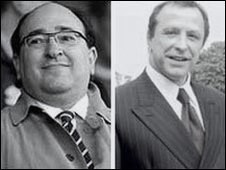Victorian brewery wells to provide Mayfield Park with sustainable irrigation

The developers behind Manchester’s first new public park in 100 years are taking more than a splash of inspiration from the area’s proud industrial heritage.
A collection of recently-discovered wells, some dating back to the Victorian era, are set to provide the new Mayfield Park with a sustainable source of water for irrigation.
The construction team delivering the new park has located 12 wells across the 24-acre site. While many were backfilled or damaged, and have been permanently capped, three wells – the largest of which was used to supply the former Britannia Brewery which was based on the east of the site in the late 19th and early 20th century – will be re-used.
The well water has been subject to stringent tests and declared safe for irrigation use.
This means that 20 cubic metres of water per day can be pumped from the wells to keep the park’s hundreds of trees and plants lush and thriving, reducing the burden on the mains supply and providing significant sustainability benefits.
Established in the 1830s, the Britannia Brewery was described in 1888 by the Manchester Courier and Lancashire General Advertiser as “one of the most important in Lancashire” and was able to produce more than 300 barrels of beer a week.
The plan to re-use the wells is the latest step taken by the Mayfield Partnership – the public-private venture led by U+I – to incorporate Mayfield’s rich history into its new lease of life.
The wells were discovered while archaeologists were cataloguing the historic features of the Mayfield site, which sits adjacent to Piccadilly Station. They are among several important discoveries made at Mayfield as work on the transformational £1.4bn regeneration scheme gains momentum.
Following the uncovering of ornate Victorian Baths earlier this year, archaeologists from Salford University have also excavated the remains of the Chapelfield Dyeworks, which was constructed at Mayfield in the 1870s.
Among the findings are the huge base of a steam engine which would have been used to power the dye works, a number of flues and striking remains of a large brick chimney.
Arlene Van Bosch, development director at U&I, said: “In forming our plans for Mayfield we’ve taken inspiration from the ingenuity that made the area a hive of activity during the industrial revolution. So, it’s entirely fitting that we’re now able to find new uses for some of the historical assets we’ve discovered as we create a stunning new public amenity at Mayfield Park.
“Although Manchester, of course, does not have any shortage of water, it makes both economic and environmental sense for us to use this amazing natural resource beneath our feet, which clearly further connects us to Mayfield’s industrial past.”
Graham Mottershead, project manager at Salford Archaeology, said: “Mayfield continues to provide new insights into how Manchester’s community of industrialists innovated to make the Mayfield area a major focal point for the textiles industry.
“Often these kind of discoveries are shielded from public view but not so at Mayfield and the partnership should be applauded for its commitment to ensuring the area’s rich history is documented and celebrated.”

Britannia Brewery on Broadie Street, Mayfield
In 2020, the Government pledged £23m of investment from its Getting Building Fund – one of the largest investments in any single project – to Mayfield Park. This investment, delivered through the Greater Manchester Combined Authority, is part of the Government’s strategy to support ‘shovel ready’ schemes that will help to drive economic recovery following the COVID-19 crisis.
The long term proposals at Mayfield will seek to enhance many of the site’s historic features. The vast depot building beneath the station building has already been transformed into a new cultural venue, Depot Mayfield, which contributed to bringing 330,000 visitors to Mayfield in 2019, after more than 30 years of decline.
Overall, the Mayfield regeneration scheme – one of the largest in the UK – is set to transform a previously derelict part of Manchester’s industrial heritage to deliver 1,500 homes, 1.6m sq ft of market-leading commercial space, 300,000 sq ft of retail and leisure facilities and 14 acres of new public realm.








